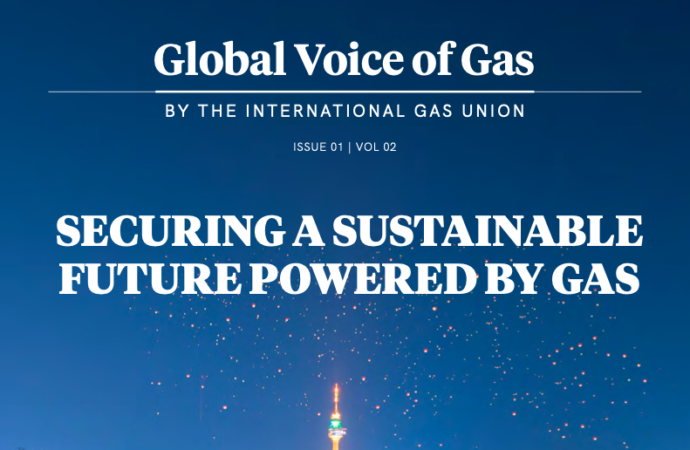Carlos Cortés Simon
Presidente Ejecutivo de AGN
IGU Regional Coordinator
Public perception about the use of gas and the role it will play in the energy transition over the next three decades is very diverse across the region, with a more challenging outlook in countries that are net importers.
Some countries across the region have committed to a net zero emission target by 2050 (Argentina, Brazil, Colombia, Costa Rica, Chile).
The COVID-19 pandemic has added volatility to both supply and demand, yet there have been no significant disruptions to the industry in Latin America, and operators have been successful in ensuring the continuous delivery of natural gas throughout the value chain. The recovery since the beginning of 2021 has been strongly supported with increased LNG imports in Brazil, Chile and Argentina, due to extra dry hydrological conditions across the Southern Cone and limited inland production in Argentina and Bolivia.
In terms of LNG, Latin America imported a record of 21.0 bcm in 2021. More than 80% of these volumes came from the US. Latin America’s LNG exports in 2021 were 9.1 bcm.
From Q4 2021, the recovery in gas production in Argentina’s unconventional fields has decreased the country’s reliance on imported gas and allowed Argentina to restart gas exports to Chile (including firm supply agreements during the summer).
Argentina
In December 2020 a gas incentive programme was launched (Gas Plan 4/Gas.Ar), to encourage companies to reverse the decline in gas production and stem the outflow of the central bank’s currency reserves by reducing imports and facilitating exports. The results have been positive, enabling the discontinuation of LNG imports at the Bahia Blanca terminal in September 2021 following a peak of total send-out of 53.4 mcmd in July at the country’s two terminals.
Argentina has significant gas resources that can be economically developed. Gas, and specifically non- conventional gas, is currently the most relevant energy source to enable the country’s comprehensive development in the short term. The 8.7-tcm resource base estimated by the IEA at Vaca Muerta is distributed at different geological levels.
The level currently being developed hosts more than 2.8 tcm, based on data from producing wells, extrapolated to wells that remain to be drilled. Argentina can harness this 2.8 tcm of gas to expand consumption, which is currently 56.6 bcma, ramp up exports to neighbouring countries from 2.8 to 8.5 bcma via pipeline and send gas further afield by building LNG export infrastructure.
To allow gas from Vaca Muerta to flow to Buenos Aires, Argentina’s government recently launched a tender for the construction of the first stage of a new gas pipeline. This stage will consist of a 657-km pipeline with an estimated budget of $1.6bn.
Argentina relies heavily on spot LNG purchases for its winter gas supply. High international LNG prices are expected to represent a big challenge this year. In 2021, LNG terminals in Argentina received 3.4 bcm in LNG.
Brazil
A new gas law was approved by Brazil’s congress and sanctioned in April 2021, raising hopes of greater market access that will reduce Petrobras’ incumbency in the gas market. Petrobras is selling its transportation and distribution assets and negotiating access to the offshore gas evacuation routes and to onshore gas processing plants. The expectation is that more gas suppliers will offer molecules to the internal market, as seen in recent auctions promoted by gas distribution companies in northeast Brazil, which resulted in around 4 mcmd of gas being offered by third party suppliers. Petrobras has also leased its LNG terminal in Bahia to Excelerate. There are now five LNG import terminals in operation, two of which were built and are operated by private companies (GNA in the state of Rio de Janeiro and Porto de Sergipe, in the state of Sergipe).
Three new LNG regasification floating terminals are under construction in the Northern, South-eastern and Southern regions, and are predicted to be commissioned between the end of 2022 and the beginning of 2024. They will add around 45 mcmd of capacity, and the country will have a total of eight LNG regasification terminals.
Industrial, commercial and residential gas consumption is quite stable, and the current national consumption is 102 mcmd, including power generation, which is highly dependent on the availability of hydropower. When hydropower generation was significantly strained in the second half of 2021, Brazil was forced to resort to 6.4 bcm of LNG.
National gas production has the potential to reach 150 mcmd by 2030, on the back of development of Pre-Salt and Northeast offshore fields. However, a substantial amount of associated gas is reinjected to increase oil recovery, and there is limited availability of offshore gas pipeline infrastructure.
The existing national gas transportation system (around 9,400 km) is very limited taking into account the large surface area of Brazil, and it runs along the coastal areas. Substantial investment is needed to guarantee access to gas within the regions located inland.
Brazilian gas imports from Bolivia were reduced from 30 mcmd to 20 mcmd, after the expiry of the primary import contract at the end of 2019.
Colombia
Colombia, which in recent years went from having 1.9mn users to over 10mn users of gas, serving close to 37mn people, is a world example in terms of market penetration. Gas represents 20% of the primary energy consumption in the country, being its second source of energy.
During the pandemic, the gas industry in Colombia reconnected 28,000 families free of charge, benefited 6mn households with a discount for timely payment, financed low-income families with $16bn interest free, and made donations of more than $23bn.
Colombia continues to expand the use of natural gas vehicles. During 2021, more than 16,000 vehicles were converted to gas, bringing the total number of conversions to 639,000. In addition, the country already has 4,061 gas-fuelled heavy vehicles, which include passenger transport vehicles, trucks, tractor- trailers and dump trucks.
In 2021, the companies affiliated with Colombian gas association Naturgas signed the “Road to Carbon Neutrality” alliance in Glasgow, which includes the intention to consolidate and strengthen the implementation of actions and best practices.
Chile
In comparison with the rest of the region, Chile has relatively smaller reserves of conventional gas, but significant reserves of unconventional gas. These reserves, however, have largely not been developed. Chile imports around 80% of its internal gas consumption in the form of LNG or through one of the five gas pipelines that interconnect the country with the different basins of neighbouring Argentina. The imported LNG arrives via two entry terminals, one
in Quintero (central zone) and the other in Mejillones (north of the country). In 2021, Chilean terminals received 4.0 bcm of LNG equivalent, the highest annual amount on record.
This summer, the shipments of gas from Argentina to Chile, committed through firm contracts, have not seen any interruptions, which is a positive sign that these imports have normalised. But LNG terminals are expected to be used at nearly full capacity during the southern winter, when imports from Argentina are expected to be interrupted.
Chile is making progress in transforming its electricity mix, through the deployment of renewables and an ambitious programme to phase out coal-fired power by 2040. However this process has not been without difficulty, triggered by a prolonged cycle of drought that has reduced water availability to levels comparable to the driest years recorded. This has led authorities to take preventive measures to manage the shortages and mitigate the risk of rationing.
The National Green Hydrogen Strategy that was launched in 2020 is an essential piece of the Chilean carbon neutrality plan and its commitment to sustainable development.
This strategy will allow the country to produce and export products from zero carbon fuels. It will also enable the country to export renewable energy to the world in the form of green liquid hydrogen, green ammonia and clean synthetic fuels. The competitiveness of Chile in renewable energy production and the global need for clean energy carriers will open the door to the creation of an economic sector that could rival the size of the Chilean mining sector. A new bill has been sent to congress which obliges gas distributors to blend gas with up to 20% green hydrogen from 2030 onwards.
Fuente: Global Voice of Gas, IGU






